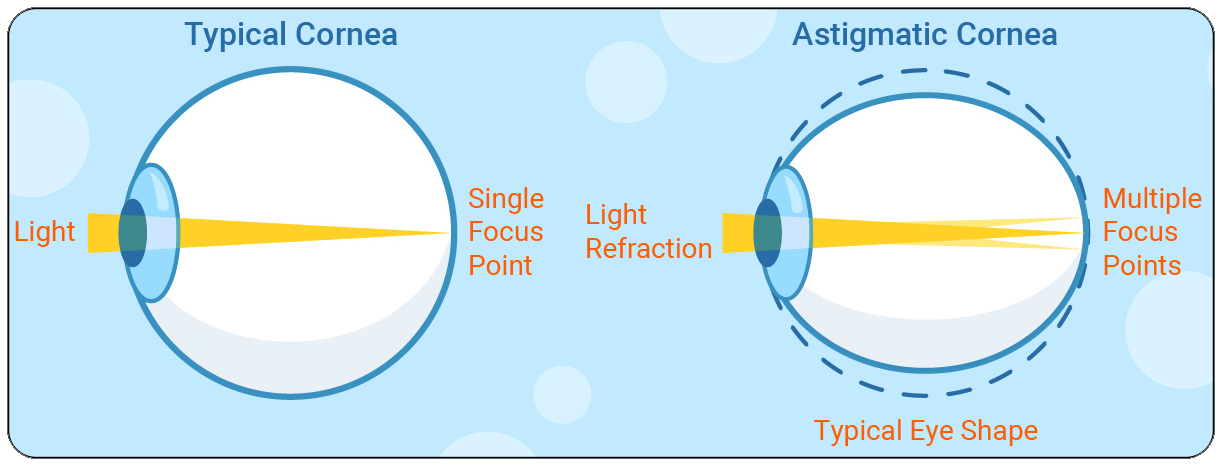What Is Astigmatism?
Has your optometrist told you that you have astigmatism? Maybe it’s a
family member in question, or you’re experiencing astigmatism symptoms, like
blurry vision when you look at objects that are both near and far.
If this blurriness while reading describes you, you’re not alone.
Astigmatism is a very common condition. You’ve probably heard the term many
times. But what exactly is it?
How do you get Astigmatism?
Simply put, astigmatism is a condition derived from a cornea or lens
that’s stretched into an irregular shape.
Instead of being shaped round, the corneas of people with astigmatism
are often oblong. This causes a refractive error, distorting light as it enters
your eyes. As a result, images appear blurry.
Kids with astigmatism and adults may have difficulty reading text or
seeing fine details in objects both near and far.
No one knows its exact origin. But while there may be different causes
of astigmatism, there’s one reason that’s usually the culprit: heredity. If you
have blurry vision, look to your family tree. Your parents or other relatives
probably have it, too.
Do you always inherit astigmatism? No, sometimes a trauma to the eye
might trigger it. There’s also keratoconus, a disorder that causes your cornea
to develop a cone shape. This brings about more severe astigmatism that may
require special contacts or surgery, but it’s also rarer.
Whether your astigmatism is mild—or not so mild—it will require some form of medical correction for clear vision. Thankfully, most forms of regular astigmatism blurriness are easily correctable.
How to detect Astigmatism
Have trouble seeing near and far objects clearly? What about frequent
headaches? Visit your family eye doctor. Blurry vision doesn’t automatically
mean you have astigmatism. It may mean something else.
With a few quick (and painless) tests, your optometrist can assess
whether you or a family member has the disorder and what steps should be taken
to correct the problem.
If you’re experiencing any visual blurriness in your eye, schedule an appointment and talk about your options.
Treatment for Astigmatism
As we’ve said, most forms of astigmatism are easy to treat. You have
several corrective choices. Some of these include:
- Glasses
- Contact lenses
- LASIK surgery
Keep in mind, when it comes to vision correction for astigmatism, all
choices aren’t equal. If you’re over 40, you may need Multifocal or Bifocal
lenses.
Speak with your optometrist about which choice is best for you and your lifestyle.
Contact lenses for Astigmatism
Toric contact lenses are usually prescribed for eye care patients with
astigmatism.
These Contact lenses for astigmatism have a thicker zone at the bottom to keep them from rotating while in the eye. This helps orient the lenses consistently and predictably for better visual acuity. It also helps simplify fitting and your time at your eye doctor.
So, if you hear your eye doctor mention the word “Toric,” you’ll now
know what it means in the world of contacts.
Correcting astigmatism can be as simple as meeting with your eye doctor and following through on your recommended options. Don’t be shy in voicing your lens preference for your type of contacts (e.g., daily, extended wear, etc.). Your optometrist is there to help.
Note: Nothing in this article is to be construed as medical advice, nor is it intended to replace the recommendations of a medical professional. For specific questions, please see your eye care practitioner.
